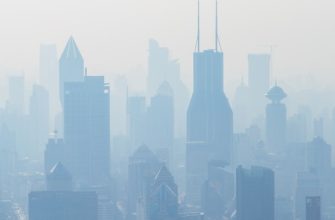- Understanding the Importance of Indoor Air Quality
- Key Factors to Consider When Choosing Air Purifiers
- Types of Air Purification Technologies Explained
- Evaluating the Effectiveness of Various Air Filters
- Cost vs. Benefits: Finding the Right Air Purification Solution
- Maintaining Your Air Purifier for Optimal Performance
Understanding the Importance of Indoor Air Quality
Indoor air quality plays a crucial role in overall health and well-being. Many individuals underestimate the impact that poor air quality can have on their daily lives. Contaminants such as dust, pollen, pet dander, and volatile organic compounds (VOCs) can accumulate indoors, leading to various health issues. Understanding the importance of maintaining clean air indoors is essential for promoting a healthier living environment.
Several factors contribute to indoor air quality, making it vital to assess and improve it regularly. Common sources of indoor air pollution include:
- Household cleaning products
- Building materials and furnishings
- Cooking and heating appliances
- Outdoor pollutants entering the home
- Moisture and mold growth
Improving indoor air quality can lead to numerous benefits. Enhanced air quality reduces the risk of respiratory problems, allergies, and other health complications. Furthermore, cleaner air can improve mood, productivity, and overall quality of life. It is particularly important for vulnerable groups, such as children and the elderly, who may be more sensitive to air pollutants.
Investing in effective indoor air purification solutions is crucial for achieving optimal air quality. Various technologies, such as HEPA filters, activated carbon filters, and UV light systems, can effectively reduce airborne contaminants. Selecting the best air purification system requires considering factors like room size, specific pollutants, and maintenance requirements.
In conclusion, recognizing the significance of indoor air quality is the first step toward ensuring a safe and healthy living environment. By understanding the sources of indoor pollution and exploring effective purification options, individuals can take proactive measures to enhance their indoor air quality and overall well-being.
Key Factors to Consider When Choosing Air Purifiers
When selecting an air purifier, several key factors must be taken into account to ensure optimal indoor air quality. The choice of an air purifier can significantly influence the effectiveness of air purification in a home or office setting.
- Filtration System: The type of filtration technology used in the air purifier is crucial. HEPA filters are highly recommended as they capture 99.97% of particles, including allergens and pollutants. Other options include activated carbon filters, which effectively reduce odors and volatile organic compounds (VOCs).
- Room Size: The size of the space where the air purifier will be used is another important consideration. Air purifiers come with a recommended coverage area, so it is essential to select a model that suits the dimensions of the room to ensure efficient air cleaning.
- Noise Level: Noise levels can vary significantly between different models. For residential use, especially in bedrooms or quiet environments, a low noise level is preferable to avoid disturbances during sleep or relaxation.
- Air Changes per Hour (ACH): This metric indicates how many times the air purifier can filter the entire volume of air in a room within an hour. A higher ACH rating is desirable for effective purification, particularly in spaces with higher pollutant levels.
- Maintenance and Filter Replacement: Consider the maintenance requirements of the air purifier, including how often filters need to be replaced and the associated costs. Choosing a model with easily accessible filters can simplify the upkeep process.
- Energy Efficiency: Look for air purifiers with an Energy Star rating. These models are designed to consume less energy while providing effective air cleaning, contributing to lower electricity bills and reduced environmental impact.
- Additional Features: Some air purifiers come with advanced features such as smart connectivity, air quality sensors, and automatic mode adjustments. These features can enhance the user experience and improve air quality monitoring.
Taking these factors into account can guide the decision-making process when choosing an air purifier, ultimately leading to improved indoor air quality and a healthier living environment.
Types of Air Purification Technologies Explained
Indoor air purification is essential for maintaining a healthy environment. Understanding the various air purification technologies available can greatly assist in choosing the most suitable solution. This section provides an overview of popular air purification methods, detailing their functionality and benefits.
- HEPA Filters: High-Efficiency Particulate Air (HEPA) filters are renowned for their ability to capture 99.97% of particles as small as 0.3 microns. They are effective against dust, pollen, and pet dander, making them a common choice for home air purification.
- Activated Carbon Filters: These filters are designed to remove odors and harmful gases from the air. The porous nature of activated carbon allows it to trap volatile organic compounds (VOCs) and other pollutants, enhancing indoor air quality.
- UV Light Purifiers: Ultraviolet light technology works by destroying bacteria, viruses, and mold spores. This method is particularly effective in sanitizing the air, making it an excellent option for those concerned about pathogens in their living spaces.
- Ionic Air Purifiers: Ionic purifiers release negatively charged ions into the air, which attach to airborne particles, causing them to clump together and fall to the ground. This technology can reduce allergens and dust significantly.
- Ozone Generators: While they can effectively eliminate odors and kill some bacteria, ozone generators must be used with caution. Ozone can be harmful to human health at high levels, making them less popular for residential use.
When selecting an air purification system, it is crucial to consider the specific needs and environmental factors. Each of these technologies offers unique advantages, contributing to a comprehensive approach to indoor air quality improvement. By understanding how these systems operate, individuals can make informed decisions that promote a healthier living atmosphere.
Evaluating the Effectiveness of Various Air Filters
Choosing the right air filter is crucial for effective indoor air purification. Various types of air filters offer different benefits and levels of efficiency in removing pollutants from the air. Understanding these differences can help in selecting the most suitable solution for enhancing indoor air quality.
- HEPA Filters: High Efficiency Particulate Air (HEPA) filters are renowned for their ability to capture 99.97% of particles measuring 0.3 microns or larger. These filters are ideal for those with allergies or respiratory issues.
- Activated Carbon Filters: These filters excel at absorbing odors and volatile organic compounds (VOCs). They work by trapping harmful gases and are often used in conjunction with HEPA filters for comprehensive air purification.
- UV Filters: Utilizing ultraviolet light, these filters target and kill bacteria and viruses, making them an excellent choice for health-conscious individuals seeking to reduce biological contaminants in their living spaces.
- Electrostatic Filters: These filters use static electricity to attract and capture particles. They are reusable and can be washed, making them a cost-effective option for long-term air purification.
When evaluating the effectiveness of different air filters, it is important to consider the Clean Air Delivery Rate (CADR). This metric indicates how quickly and efficiently an air purifier can remove specific pollutants from the air. A higher CADR signifies better performance in air filtration.
Additionally, the size of the room plays a significant role in the effectiveness of air filters. Choosing a filter rated for a larger area than the intended space can enhance air purification efficiency. Filters designed for smaller spaces may struggle to maintain clean air in larger rooms.
In summary, understanding the various types of air filters and their effectiveness is key to making an informed decision for indoor air purification. Factors such as CADR, room size, and specific air quality needs should guide the selection process, ensuring the best possible solution for a healthier indoor environment.
Cost vs. Benefits: Finding the Right Air Purification Solution
When it comes to indoor air purification, understanding the balance between cost and benefits is crucial for making an informed decision. Various air purification solutions are available, each offering distinct advantages and potential drawbacks. Evaluating these factors can help identify the most suitable option for specific needs.
- Initial Investment: The purchase price of air purifiers can vary significantly based on technology, brand, and features. High-end models often come with advanced filtration systems that can effectively remove pollutants, but their upfront costs may be higher.
- Long-Term Savings: While some air purifiers might require a larger initial investment, they can result in savings over time through energy efficiency and reduced health-related expenses. A quality air purification system can decrease the likelihood of respiratory issues, leading to fewer medical bills.
- Maintenance Costs: Regular maintenance is essential for any air purification solution. Filter replacements, cleaning, and servicing can add to the overall cost. It’s important to consider these ongoing expenses when evaluating options.
- Effectiveness: The effectiveness of an air purifier in removing allergens, dust, and other pollutants is a key benefit that often justifies its cost. Understanding the specific needs—such as allergy relief or odor removal—can guide the selection of the most effective unit.
- Environmental Impact: Some air purification systems are designed with eco-friendliness in mind, using less energy and producing minimal waste. Investing in a sustainable solution can provide long-term benefits for both health and the environment.
In conclusion, when considering indoor air purification, weighing the costs against the benefits is essential. A thorough evaluation of initial investment, long-term savings, maintenance costs, effectiveness, and environmental impact will lead to a more informed choice. Selecting the right air purification solution contributes to enhanced indoor air quality and overall well-being.
Maintaining Your Air Purifier for Optimal Performance
Maintaining an air purifier is essential for ensuring its optimal performance and longevity. Regular upkeep not only enhances the effectiveness of indoor air purification but also prolongs the life of the device. To achieve the best results, follow these maintenance guidelines.
- Filter Replacement: Regularly change or clean the filters as recommended by the manufacturer. A clogged filter can reduce air purification efficiency and lead to poor indoor air quality.
- Cleaning the Unit: Wipe down the exterior of the air purifier with a damp cloth to remove dust and debris. This simple step helps maintain the unit’s appearance and performance.
- Check for Blockages: Ensure that the air intake and outlet are free from obstructions. Blockages can significantly hinder the air purification process.
- Monitor Air Quality: Use an air quality monitor to track the effectiveness of the air purifier. This can help determine when maintenance is needed or if adjustments are required.
- Follow Manufacturer Guidelines: Adhere to the specific instructions provided by the manufacturer regarding maintenance schedules and procedures for optimal indoor air purification.
By consistently following these maintenance tips, users can ensure that their air purifier functions at peak efficiency, providing clean and fresh indoor air. Regular maintenance not only enhances the air purification process but also contributes to a healthier living environment.








